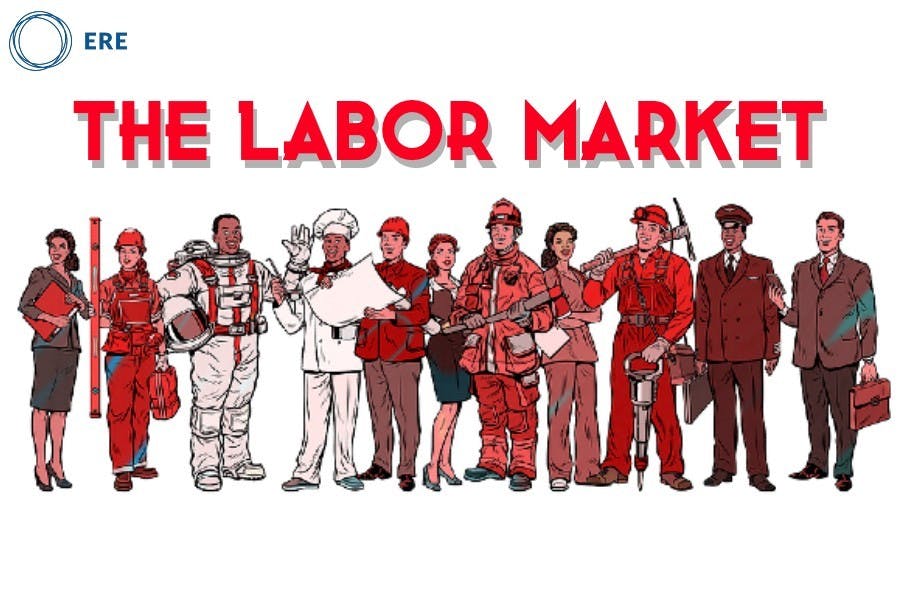The 194,000 jobs gained in September was the second-lowest monthly total since the labor-market impact of the pandemic was first felt in April 2020. Only December 2020 was lower during that stretch, when 306,000 jobs were lost.
Granted, moderate job gains were expected last month, especially given the drastic rise in virus counts that peaked around mid-month. Still, though, many economists expected at least double the reported figure.
On the bright side, close to 5.1 million jobs have been added back to the economy so far in 2021 — a very significant total. Keep in mind, there were approximately 4.3 million jobs added in 2018 and 2019 combined. The pace at which we’ve recaptured jobs has been incredible, but businesses want to hire more — and at a faster rate.
And there certainly does appear to be more room for hiring. The latest figures show 10.4 million open jobs in the U.S., down slightly from the record 10.9 million open jobs the previous month — but this is still well above historic norms.
The latest readings, from August, showed 1.2 million open jobs in retail trade. Job openings in that industry tend to rise as the calendar approaches the holiday season, but the logistics of getting goods to retailers has been a struggle. Meanwhile, professional and business, healthcare, and the restaurant and hotel industries combined for an additional 4.8 million open jobs.
Two Industries Stand Out From the Crowd
Easing restrictions and social behaviors returning closer to previous norms helped boost two industries that had major job losses during the early stages of the pandemic. If you’ve recently attended a sporting event or concert or visited a museum, you likely contributed to a jump in employment for the arts, entertainment, and recreation industry, which added 43,000 jobs in September.
At the same time, whether it was buying new accessories to wear to one of those social events, a change of season on the horizon, or a return to school or the office, consumers began restocking their closets. Clothing stores were the other big winner in September, with 27,000 jobs added. While a step in the right direction, retailers are still scrambling to find enough workers.
Retention Gets More Difficult
With such an incredibly tight labor market, talent acquisition professionals are doing their best to poach candidates from their current jobs. The number of people quitting their job hit another record with 4.3 million people voluntarily leaving their roles based on seasonally adjusted data. It’s hard to imagine a significant change in that trend anytime soon, and hiring managers need to stay buckled up for a turbulent period of employee transitions.
The unemployment rate dropped to 4.8% in September. In other times, that low rate would signal a labor market firing on all cylinders. For perspective, unemployment was above 4.8% for more than two decades from 1974 until late 1997 — spanning the presidential administrations of Gerald Ford, Jimmy Carter, Ronald Reagan, George H. W. Bush, and half of Bill Clinton’s. Today, the lower unemployment rate amplifies the fact that there is a lack of people looking for work.
The labor force contracted by 183,000 people between August and September, as fewer people sought to find a job. There are still 3.1 million fewer people in the labor force compared to February 2020. Combine the smaller labor force with the number of people quitting their jobs, and it signals a massive shuffle of talent that will continue for some time.
The Outlook
The labor market added more than a million jobs in July, and just under that total in June. The days of that type of mega-growth in a single month is likely a thing of the past. Looking toward the end of this year and early 2022, expect relatively modest job gains to persist, as we continue to manage the many disruptors impacting today’s hiring environment. Vaccine mandates, virus counts, and in-office or remote work are only a few.
Now, add to the mix worker strikes throughout the nation and that creates an extra level of complexity for employers. For more insights, view the Labor Action Tracker from Cornell University’s School of Industrial Labor Relations, which details the reasons behind the various strikes. These include issues such as pay, benefits, and Covid protocols.
The recent wave of labor protests is yet another factor in a very complicated labor market. Hiring will continue, as companies work to backfill positions from employees who have recently departed for another job opportunity. But net new job creation will likely be tougher in the months ahead compared to the robust spring and summer of hiring the U.S. recently experienced.
